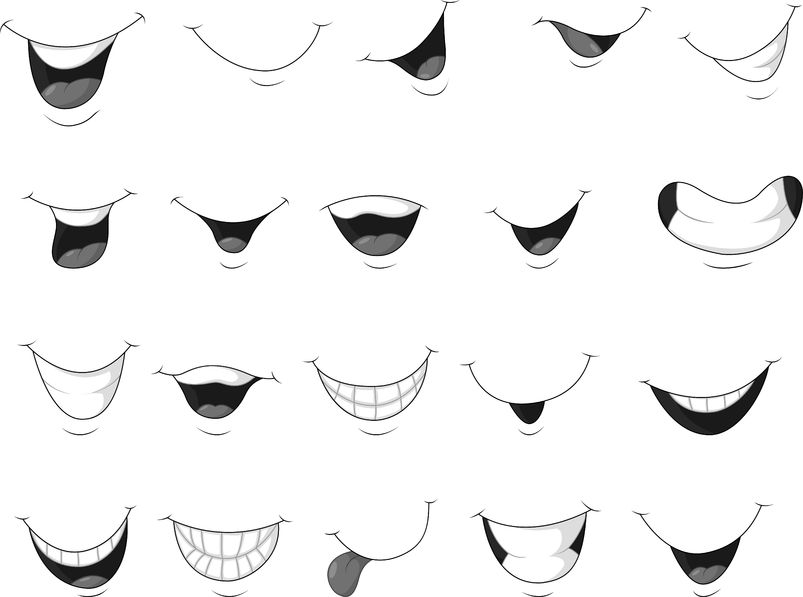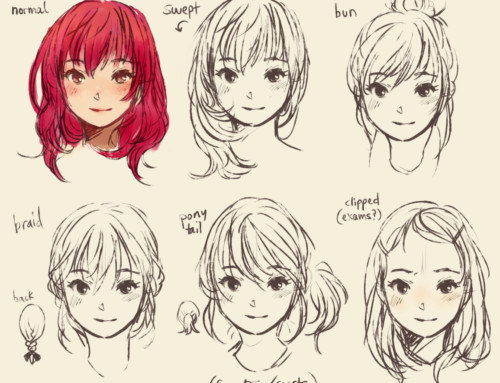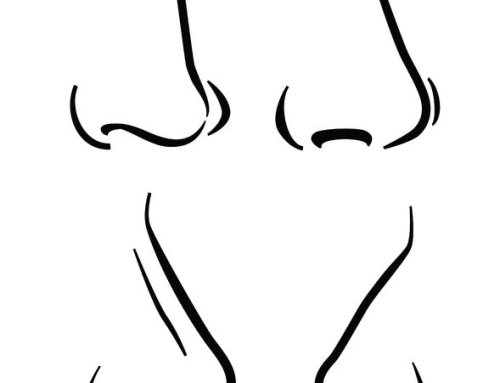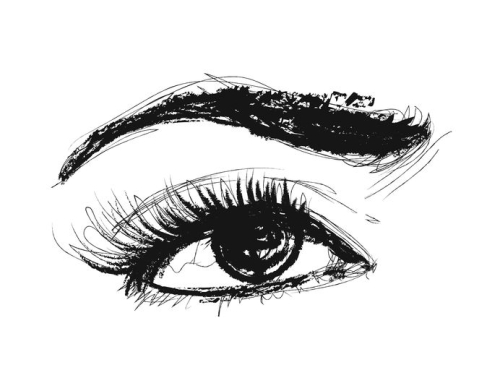The mouth is one of the most important features involved in creating facial expressions.
It has a tremendous range of motion, and can do everything from pucker to yawn.
The corners of the mouth can raise or lower, the lips can push out, stretch flat, or pull wide. And we use our mouth continually, not only to form words, but to laugh, cry, kiss, pout, scowl, smile, frown, sing and scream.
It becomes difficult to show this range of motion and abilities in drawings, however, because of the tendency to rely too much on the mouth.
Because it moves so much, we tend to think that it holds the key to the complete expression on its own, and so wind up drawing the mouth in unusual and unrealistic positions, or become frustrated when the mouth with the corners downturned still doesn’t look angry or sad.
The mouth is crucial, of course, but it doesn’t work alone. Examine the muscle structure of the face and you’ll see that the features are interconnected.
A change in the mouth involves change in the cheeks, in the eyes, the eyebrows, and chin. So in order to show happiness, it isn’t enough to draw a happy mouth; after all, a mouth with up-turned corners may be present on happy faces as well as sly faces, disgusted faces, bored faces, and sarcastic faces.
The key to expression is not in the individual features, but in studying faces closely to see how the features work together.
Part of the expressiveness of the mouth comes from the lines that run from the corners of the nostrils to the corners of the mouth, called the nasolabial folds.
These folds accent the mouth by bringing out clearly what the cheek muscles are doing, so study how they change to show the differences between, for instance, a laugh and an angry shout, both of which may have very similar mouths.
As you draw mouths, keep in mind that the shape of the lips and mouth opening is just as important as the direction of the corners. For example, study the difference between a mouth open in crying and laughter, both of which have upturned corners.
Mouths can be very frustrating to draw, so for the best results, always begin with guidelines for the top, bottom, and sides.
Make a box around those guidelines, and then sketch the mouth inside the box, beginning with outer shape of both lips, and then working your way in to the bottom of the lips, teeth, and tongue. Work from large to small shapes.
Want To Learn More…
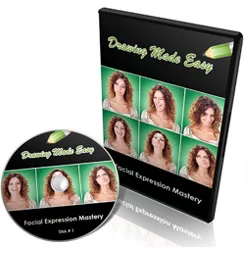
With clear (and fun) instructions on how to draw …
… you’ll learn at your own pace in the comfort of your home.
You get 10 high definition videos with simple and easy to follow written instructions.
By the end of it — you’ll know exactly how to make your drawings jump off the page.

